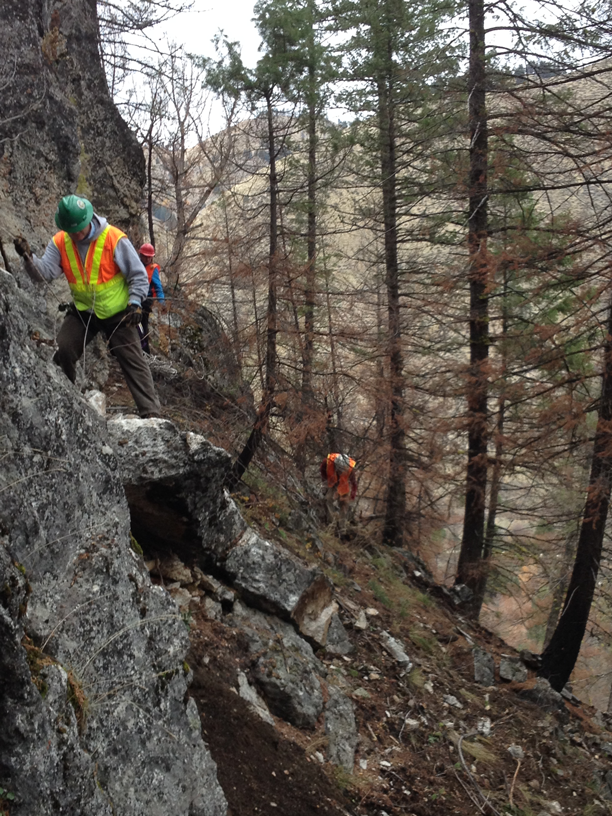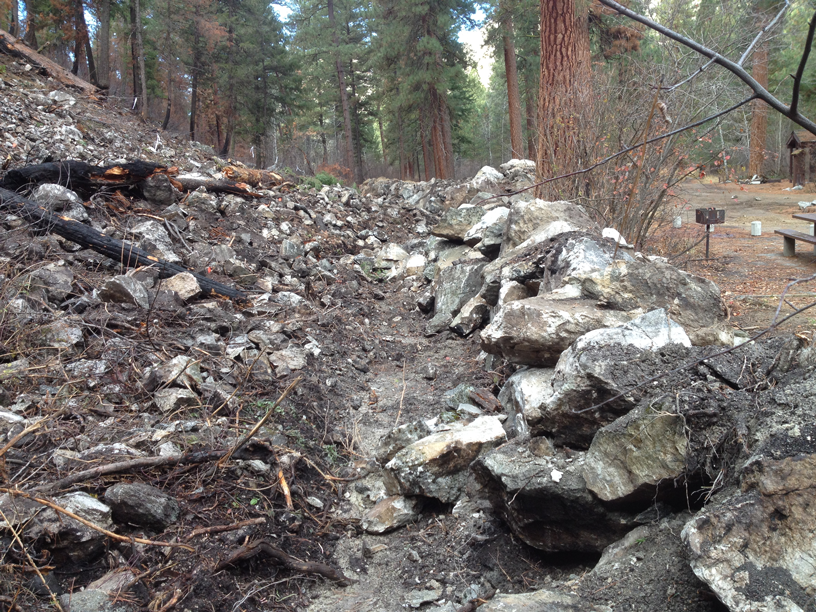When a lightning-caused fire destabilized boulders and rocks at Baumgartner Campsite, a popular recreation spot near Featherville, Idaho, and necessitated its closure, the US Forest Service (USFS) contracted BIO-WEST and Western Geologic to mitigate the potential hazards to the campground and its future occupants. Professional Geologists Wes Thompson (BIO-WEST) and Bill Black (Western Geologic) inspected the hillside and collected data related to topography, jointing, rock size, and other variables used to model rockfalls.

Western Geologic used rockfall software with the collected field data to model potential parameters such as bounce heights, run-out lengths, and rock velocity. This information was used to design a large rock and earth berm to capture the falling rocks. The USFS built the berm at the bottom of the hillside to protect the campsites. As an additional measure to reduce rockfall risk, a scaling operation was conducted to remove potentially mobile rocks from the slope. BIO-WEST brought in the “rock stars,” a scaling crew that used climbing ropes and rappelling gear to position themselves on the slopes, cliffs, and outcrops, and applied crowbars and steel digging bars―and often their feet―to scale the rocks. Beginning at the top of the slope, they determined which rocks needed to be scaled by testing them manually. If a rock could be moved using body force or tools, it was scaled from the hillside. BIO-WEST crew members sent about 800 rocks flying, testing their own strength and the effectiveness of the berm. Only fragments from two rocks escaped the berm during the three-day project. However, even one fragment of Cretaceous granodiorite or quartz monzonite from the Idaho batholith is enough to spoil a picnic or camp out, so BIO-WEST recommended adding additional material to low spots in the berm to ensure that, if a rock does roll, the campsite and campers will be protected. The campsite is open to the public again, and the USFS is implementing yearly monitoring to verify that the berm is intact and remove captured rocks so the berm remains fully functional. BIO-WEST expects the rockfall mitigation from scaling efforts to last 5–10 years.

